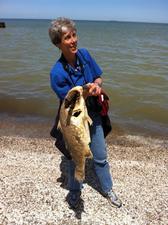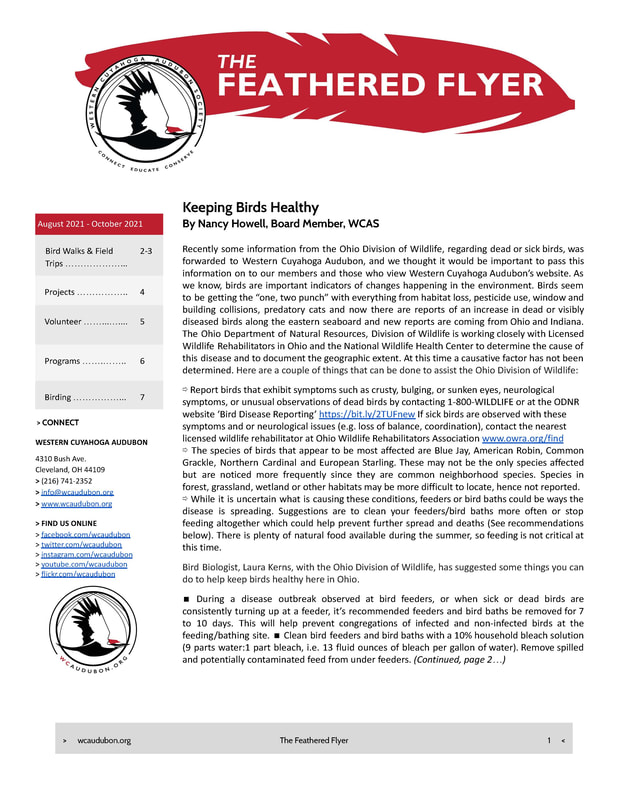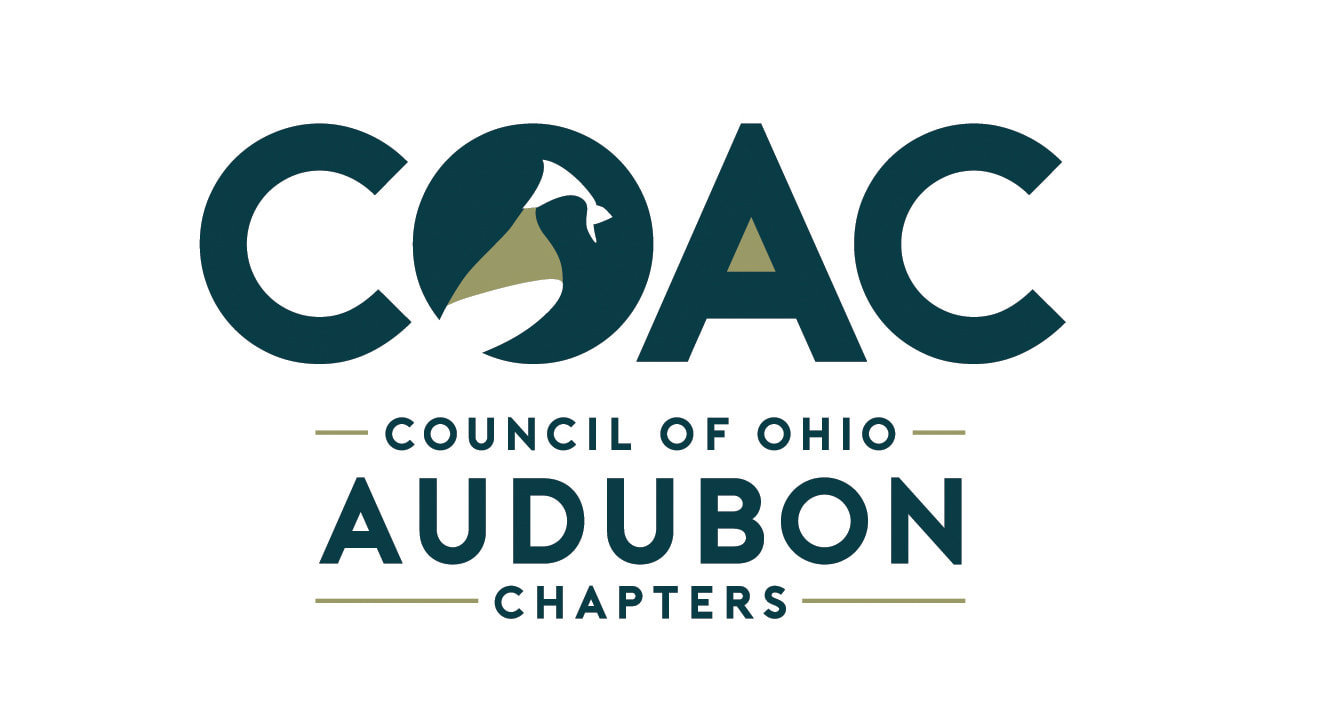In 2018 Year of the Bird, the Bald Eagle, Kirtland's Warbler, Least Tern, Piping Plover, Rufa Red Knot and the Whooping Crane have been Federally-listed as threatened, endangered, proposed, or candidate species' by the USFWS in 8 midwest states. Here are some simple ways to help protect birds in our area, perhaps your yard, neighborhood, and beyond.
2018 Year of the Bird
By Nancy Howell, Board Member, Western Cuyahoga Audubon The Year of the Bird is being celebrated by four heavy hitting organizations - The Cornell Lab of Ornithology, National Audubon Society, National Geographic Society and BirdLife International - all organizations that support research on, conservation of and advocacy for birds, bird habitats and studying environmental concerns affecting birds. So why celebrate birds? Well … birds live in or use nearly every habitat on the planet. Birds can be seen in the most urbanized areas to the most remote. They inspire us with their song, color, flight and more. They are celebrated in art, music, dance and literature. They ARE the barometers for the health of habitats, ecosystems and environments. We know many of the problems birds are facing throughout the world. We can dwell on these problems but it would make an unappetizing read. So instead, let’s look at how all of us can help birds. In this Year of the Bird - here are some simple ways to help protect birds in our area, perhaps your yard and neighborhood and beyond, even the most remote and exotic places on the planet.
Six simple things were listed that can help make 2018 a better year for birds. Already doing many of the things noted above? Then take it a step or two further and become an active volunteer or participant in environmental events. Celebrate the Year of the Bird in your yard or neighborhood or community or with us at Western Cuyahoga Audubon! [Editor's Note: The slideshow above depicts United States Fish and Wildlife Service Federally-Listed Threatened, Endangered, Proposed, and Candidate Species' in the Midwest Region States of Illinois, Indiana, Iowa, Michigan, Minnesota, Missouri, Ohio and Wisconsin. Learn More] Download: 2018 Year of the Bird by Nancy Howell, Board Member, Western Cuyahoga Audubon.pdf
Make A Donation to Western Cuyahoga Audubon. Your gifts guarantee chapter activities, programs and research continues to reach members and connect birding conservationists around the world. Use our safe and secure PayPal payment button below to make a donation of any amount you choose. All donations are gratefully received.
Comments
|
Story BlogThe Feathered Flyer blog publishes human interest stories about birding and habitat conservation. After watching, ‘My Painted Trillium Quest' by Tom Fishburn, Kim Langley, WCAS Member said, “Wonderful! It was a lift just knowing that such a site exists and is being protected!”
Media LibrariesQuarterly NewsletterSTORIESPodcastsWCAS is a proud member of The Council of Ohio Audubon Chapters (COAC) and promotes chapter development by sharing the best practices, brainstorming solutions to common problems, and building relationships in workshops and retreats. Subscribe
VideosYouth
Advocacy
Clean Energy
Reporting
Awards
Volunteerism
Take ActionResourcesBlogsArchives
October 2023
Categories
All
|
EDUCATENews Blog
Monthly Speakers Field Reports Bird Walk Reports Christmas Bird Count-Lakewood Circle Media Library Newsletter Archive Education Resources STORE |
Western Cuyahoga Audubon Society
4310 Bush Avenue Cleveland, Ohio 44109 [email protected] Western Cuyahoga Audubon Society is a 501(c)(3) nonprofit organization. Your donation is tax-deductible. The tax ID number is: 34-1522665. If you prefer to mail your donation, please send your check to: Nancy Howell, Western Cuyahoga Audubon Treasurer, 19340 Fowles Rd, Middleburg Hts, OH 44130. © 2020 Western Cuyahoga Audubon Society. All rights reserved. Privacy Policy | Terms of Use | Legal | Store Shipping Rates | Site Map |










 RSS Feed
RSS Feed

